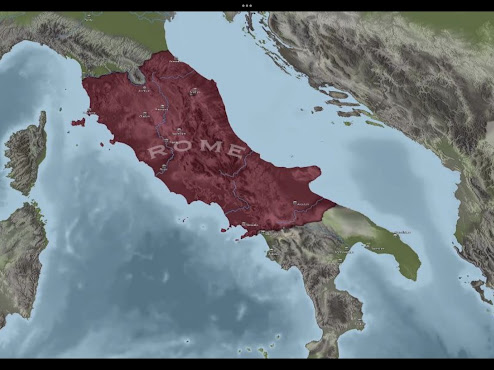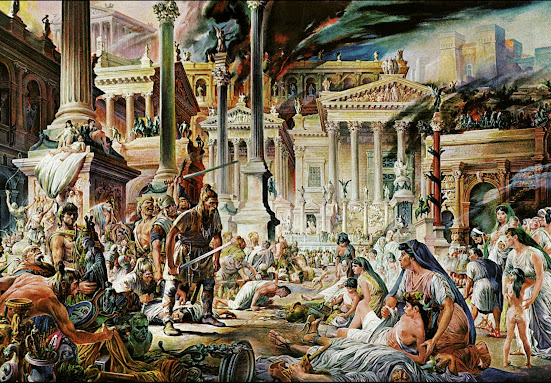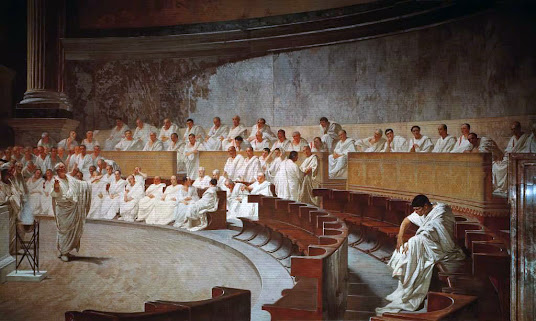The battle of Ticinus
When Hannibal reached Po valley, after crossing the Alps. He demanded that all Gallic tribes in the valley must join him in his campaign against Rome. Some tribes agreed to join him but the majority of them refused to join him especially in the area of Podemont. So, Hannibal went to Podemont and executed all of them. This cruel action has an immediate effect, as all Gallic tribes agreed to join him en mass, fearing the same fate of Podemont. Hearing the news of Hannibal arriving to Po valley, Rome was shocked by the speed of which Hannibal arrived the valley. So, Rome sent an army under the command of Poblius Scipio to meet Hannibal. There, west of the river Ticinus, the first battle Hannibal fought in the second Punic war against Rome. The battle of Ticinus ended with decisive victory for Hannibal. Publius Scipio wounded seriously in the battle, but his son, Scpio Africanus, saved him and carry him away from the battle field. The news of battle of Ticinus spread widely in the area causing large number of Gauls join Hannibal doubling the Carthaginian army. Scipio retreated to the city of Placentia to the south waiting for the army of Tiberius Longus which was located at the city of Aremenum, arguing that Hannibal will pursue his army to destroy them completely. Hannibal responded by walking to the south toward the city of Aremenum to prevent Longus from joining Scipio.
The battle of Trebia
Knowing that there is no hope to be reinforced by Longus, Scpio fled with his army toward the river Trebia waiting there Longus to join him. Hannibal realised that his army become huge causing food supply dwindle, so he marched to the city of Calstidium which contains grain depot. Short after Longus joined Scipio on the eastern bank of the river Trebia, while Hannibal was on the western bank. Pushed by his rush and aggressiveness, Longus wanted to do battle as soon as possible to gain the honour of defeating Hannibal. On the other hand, Scipio realised that the Roman army need to get more training and experience. Ignoring Publius’s caution, Longus led the army toward Hannibal’s army to do battle. The number of the Roman army was 42,000 while the Carthaginian army was 38,000. The tow armies stood shortly on the opposite banks of the Trebia River, then Longus ordered his soldiers to cross the river to launch a full scale battle on the Carthaginian troops. But, as expression of his genius, Hannibal hide 1000 horsemen under leadership of his brother, Mago, so when Longus launched his attack, mago attacked the Roman army from behind leading to catastrophic losses for the Romans and a decisive victory to the Carthaginians. Longus, Scipio and the survivals fled to the city of Placentai. Short after, Hannibal marched to Placentia besieging it. Longus and Scipio realised that is any resistance would be futile and it’s time for elections ,so they abandoned the city and returned to Rome.
After the tow decisive battles, fear and panic swept Rome. The Roman senate started the new elections choosing Geminis and Gaius Flaminius as new councils. In addition to that, they recalled the legions from Sicily and Sardinia.
The battle of Trebia
The battle of Lake Trasimene
After the great victory at battle of Trebia, Hannibal’s plan was as follows : as the Gallic tribes, constitute a great part of his army, and these tribes fight only for spoils, this means that they are unprepared for long sieges and long-term war. So he decided to conquer the Latin tribes in southern Italy in convince them to defect to his side instead of besieging Rome which in any case well defended and has huge walls.
The Roman senate sent his tow councils to Aremenum and Aretuim to block the ways thorough which Hannibal can march to Rome. Although, it was the difficult route for Hannibal, he decided to go to Aretuim through the Apennine Mountains to meet Flaminius instead of going to Areminum where Servelius stations, arguing if he goes to Aremenum, he will be trapped between the armies of Servilius and Flaminius. The journey through the Apennine was gruelling because of the swamp created by heavy rain, causing the Carthaginian army to march for three successive days without rest and death of all elephants except of Hannibal. Hannibal also lost his eye due infection and many of his men perished in the gruelling journey. Hearing of Hannibal arrival at Aretuim, Falminius sent to Serviluis to join him to fight Hannibal together. Hannibal wanted to do battle before Serviluis’ army arrival, realising that if tow armies get together, it will be difficult to defeat them. Learning that Flaminius is hotheaded and impulsive, Hannibal wanted to provoke him and lure him to to do battle. To do so, he order his men to burn the cites near Arituim to lure Flaminus to fight. plan. Falminus inflamed and got angry when saw the columns of smoke coming out of the nearby cities, but he follow the advice of the seneate to wait Serviluis. Sensing that his plan backfired, Hannibal descended south bypassing Falminus’ army and risking by being an entire army behind him at any moment will attack him from behind. Seeing Hannibal’s army bypassing his army with no regard, Falminus was fuming, so without waiting for Serviluis, he led his army behind Hannibal. When Hannibal reached the lake of Trasimine he hid his Gallic worries and some of Carthaginian troops behind the mountains near the lake. When Flaminus and his men came opposite to Hannibal’s Army, Hannibal ordered his troops hidden in the mountains to attack the Roman army from behind. The Roman army was annihilated in the battle and Hannibal is victorious again. To make matter worse Serviluis sent 4000 thousands cavalry to assist Falminus not knowing that that the battle was lost. Hannibal sent several thousands to make an ambush for these cavalrymen killing have of them and capturing the other half.
The battle of Lake TrasimeneAfter the decisive defeat at the battle of the lake Trasimene, the Roman senate realised that the policy of election tow councils has no benefit against the cunning of Hannibal, so they decided to elect one dictator has absolute power and leads the entire army of Rome. Fabius Maximus was elected as a dictator of Rome. Meanwhile, Hannibal decided to continue to conquer the cities around Rome marching to Appolia south of Italy. Fabius had a completely different plan to confront Hannibal. He saw that the best way to defeat Hannibal is by not engaging with him in battle but surrounding and shadowing his movement and prevent any supplies reaching him. In addition, he focused in preventing the Italian allies from making alliances with Hannibal. This strategy will be known as Fabian’s strategy. This strategy wasn’t received well by the the senate, as Rome was not accustomed to adopts such strategies, as they were accustomed to destroy their enemy and confront him face to fece. Hannibal failed to lure Fabius to do battle, so he headed west to Campania which was the most important area in Italy after Rome, as it contains many harbours.
Watch this video to have more information https://youtu.be/e3JPe75W-Eg
























